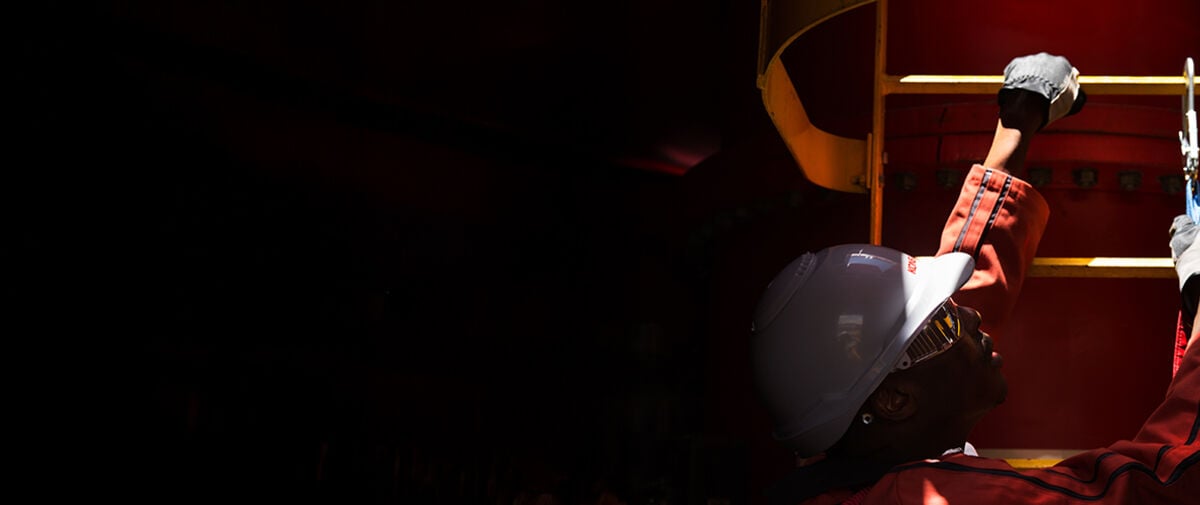By Matt Ghiloni, HSE Director, Region AME
Konecranes customers often compliment our service technicians for their attention to identifying and mitigating workplace safety issues when they perform overhead crane service and repair at their manufacturing facilities. This reflects Konecranes deep-rooted safety culture, which extends from our service team to our customers’ workforce. We strive to set and uphold the example when we enter a customer’s facility, never lowering our safety standards.
Risk assessment helps identify on-site hazards
On service calls, our technicians are trained to approach each facility as an unfamiliar environment, even for customers we regularly serve. To help inspectors and technicians identify potential hazards in the area they will be working, we developed a Point of Work Risk Assessment (PoWRA). This assessment can help our employees be more aware of their surroundings and identify the presence of hazards.
The point of work risk assessment helps inspectors and technicians:
- Identify escape routes, tornado shelters, eye wash stations and emergency contact numbers.
- Determine whether we have all the proper tools for the job and if they are properly prepared. For instance, if we’re using a hand grinder, does it have the right type of grinding wheel, is the safety guard on, and does the release switch work properly so power cuts out when finger pressure is removed?
- Look for slip, trip and fall risks and ergonomic issues.
- Assess forklift, crane and pedestrian traffic.
- Determine energy sources that need to be locked out, tagged out and tried out to verify a zero-energy state before work can begin.
Through a PoWRA we identify the hazards and then determine how to mitigate them as much as possible. For example, if we see that traffic is an issue, we put up signs and barricades to route traffic around the work area.
Step back and reassess
In much the same way that our technicians conduct PoWRAs, factory personnel should conduct pre-work assessments of their work areas through a job safety analysis — essentially treating their work environment as unfamiliar territory. After all, any work environment can change from one shift to the next — a maintenance employee may have recently changed an electrical switch or someone on second shift may have left a pallet out where someone could trip over it.
If you just walk in and start your job without truly assessing your area, you could get seriously hurt.
Similarly, when a customer’s job process or environmental conditions change, our inspectors and technicians reassess the situation, as hazards and risks may also change. Again, someone could get seriously hurt if we don’t take the time to stop, step back and reassess.
Don’t get too comfortable
One of the greatest workplace safety hazards is complacency. Bad habits develop from complacency and the belief that a bad outcome won’t happen to you.
It’s common to say, “I do this every day” and think that you can get by without wearing personal protective equipment (PPE) this one time. But that could turn out to be the time you really needed your safety glasses or protective gloves.
Every dollar spent on PPE results in four dollars saved through injury prevention. In a manufacturing setting, complacency can kill, or at the minimum do bodily harm.
Many workplace fatalities involve head injuries caused by a slip, trip or fall from less than four feet. Even the smallest incident can be dangerous if we’re not careful. Regular training can help avoid complacency among employees, reinforcing the purpose of precautionary measures and the fact that we want them to go home safely every night.
The importance of tidying up
One of the biggest factors in preventing incidents and injuries is really quite simple - good housekeeping. Many broken or twisted ankles and knee injuries happen because tools or pallets are left where they shouldn’t be. Keep your area organized and clean and pick up at the end of the day for those who will be coming in after you. Save them from unfortunate surprises.
Daily inspections are a crane operator's own assessment of the condition of the crane and environment for safe use. Our CheckApp for Daily Inspections includes and easy-to-use app to perform inspections and Konecranes Portal access to inspection records.
